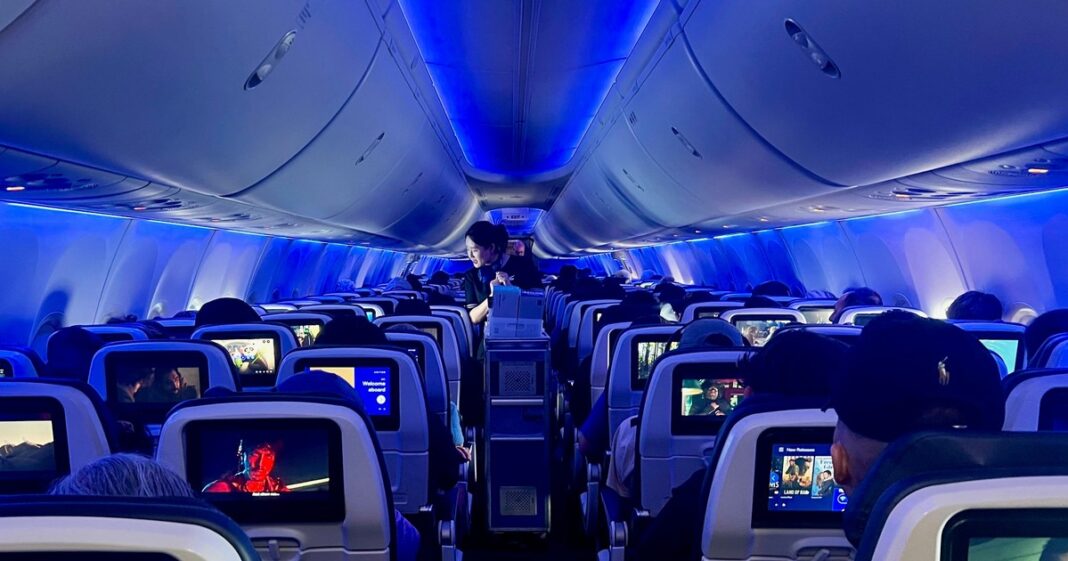The Airlines Race: United vs. American and Delta’s Premium Offerings
In the competitive landscape of air travel, the major airlines in the U.S. are in a constant state of flux. Recently, United Airlines has made headlines for its attempts to reposition itself as a premium alternative among the so-called “Big Three” airlines: United, American, and Delta. This competition isn’t just confined to ticket pricing or frequent flyer miles; it’s about enhancing passenger experience and service offerings, particularly for premium travelers.
United Airlines’ Bold Innovations
During a recent earnings call, United Airlines emphasized its commitment to enhancing passenger comfort, highlighting the growing number of seatback screens installed across its fleet. As of now, more than 146,000 seats on 765 planes are equipped with these screens, showcasing a clear difference in approach compared to some of its competitors.
Yet, the contrast is stark. While United is investing heavily in these features, American Airlines continues to opt for a different strategy, stubbornly refusing to install seatback screens on most of its domestic flights. Instead, American offers tablet holders, allowing passengers to stream entertainment on their own devices. This decision, while cost-effective in terms of weight and fuel savings, has drawn mixed reviews from travelers who prefer dedicated screens.
United’s Financial Performance
United reported a growth in premium cabin revenue of approximately 6% year-over-year for the third quarter. However, it fell short compared to Delta, which reported a 9% growth in the same metric. United is keenly aware of these metrics, as it seeks to attract high-paying premium and business travelers, portraying itself as a more exclusive option in a competitive marketplace.
The airline’s efforts reflect a substantial investment, with their signature interior conversion now reaching 64%, amounting to over $1.6 billion. United’s executives are not shy about expressing how these advancements set them apart, as they recognize that “these screens define a premium airline in the U.S.”
Delta’s Lounge Experience
While United has focused on seating enhancements, Delta has been working on creating a more exclusive lounge experience. Despite complaints about overcrowded Sky Clubs, which are Delta’s airport lounges, the airline is making moves to address these issues.
In 2023, Delta raised its annual lounge pass prices and restricted access to basic economy passengers unless they had specific credit cards. These changes aim to curtail crowding and elevate the quality of service offered in its lounges. Furthermore, Delta is introducing a new tier of exclusivity in the form of “Delta One” lounges, set to debut by 2025 in major cities like New York, Boston, Los Angeles, and Seattle.
American’s Stance on In-Flight Entertainment
American Airlines continues to stick to its strategy of forgoing seatback entertainment systems for most of its domestic fleet. While it does offer in-flight movies on long-haul flights, the majority of their aircraft are equipped only with tablet holders. An American spokesperson defended this choice, stating that over 90% of customers bring their own devices, and the airline is committed to enhancing connectivity and providing free entertainment options that passengers can enjoy on devices they personally choose.
The Earnings Snapshot
The recent earnings season has revealed mixed results among the three airlines. United saw a decline in stock value despite reporting earnings above analysts’ expectations, while it remains up by more than 34% over the past year. Delta’s stock has increased about 6.5% in the same timeframe, and American Airlines, slated to report earnings next week, has faced a nearly 8.6% drop.
In a competitive environment marked by fluctuating traveler preferences and economic pressures, it’s clear that each airline is vying for the attention of an increasingly selective market. While United positions itself firmly in the premium space, American and Delta are not resting on their laurels, making necessary adjustments to secure their share of high-paying travelers.
Closing Thoughts
The ongoing competition among these airlines reflects broader trends in customer expectations and service offerings. As they vie for market share, innovations in cabin comfort, in-flight entertainment, and exclusive lounge experiences will continue to shape the future of air travel in the U.S. Each carrier has its unique approach to addressing the evolving demands of passengers, creating an engaging landscape for travelers seeking both comfort and value.



